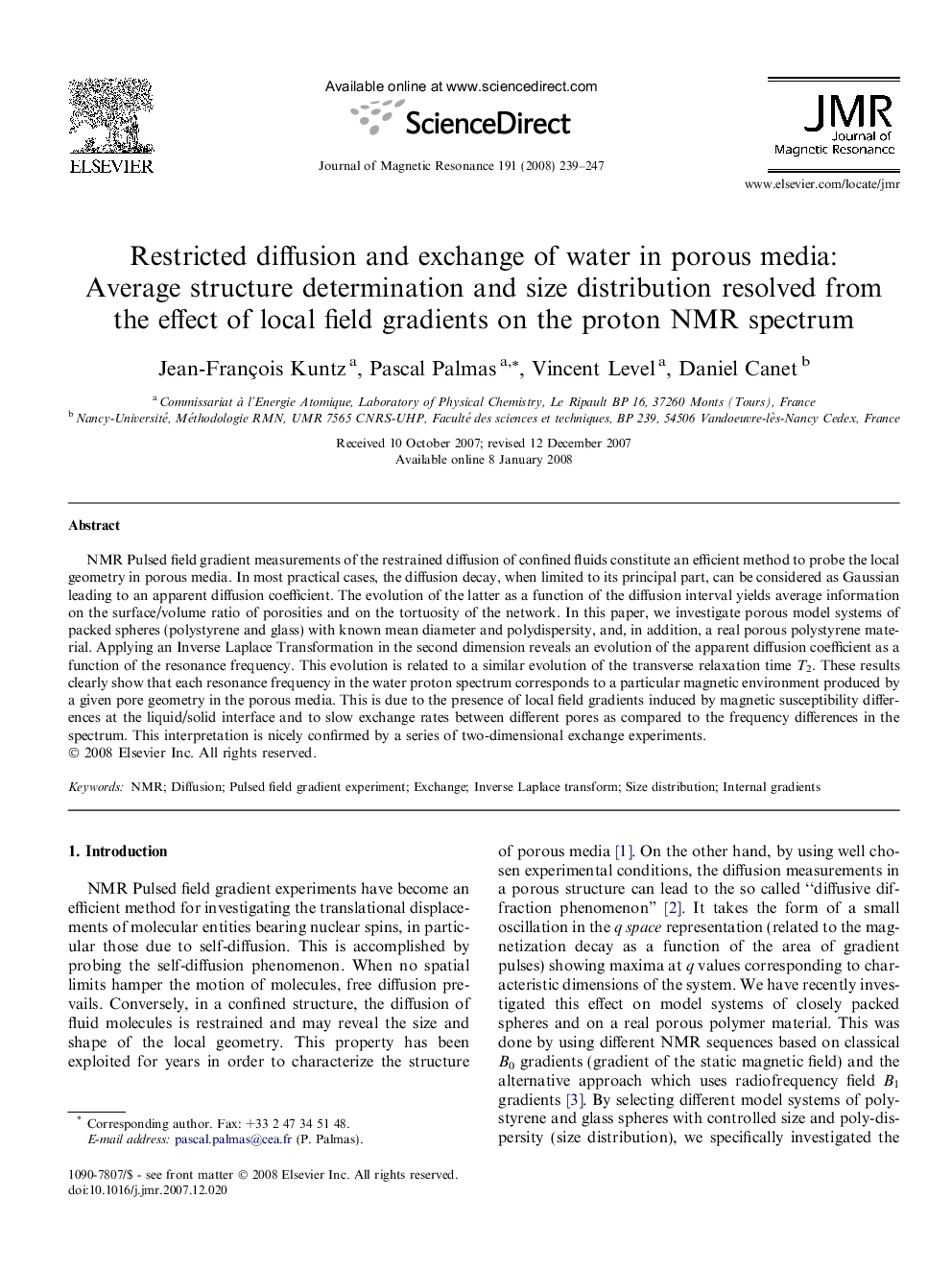| Article ID | Journal | Published Year | Pages | File Type |
|---|---|---|---|---|
| 5407278 | Journal of Magnetic Resonance | 2008 | 9 Pages |
Abstract
NMR Pulsed field gradient measurements of the restrained diffusion of confined fluids constitute an efficient method to probe the local geometry in porous media. In most practical cases, the diffusion decay, when limited to its principal part, can be considered as Gaussian leading to an apparent diffusion coefficient. The evolution of the latter as a function of the diffusion interval yields average information on the surface/volume ratio of porosities and on the tortuosity of the network. In this paper, we investigate porous model systems of packed spheres (polystyrene and glass) with known mean diameter and polydispersity, and, in addition, a real porous polystyrene material. Applying an Inverse Laplace Transformation in the second dimension reveals an evolution of the apparent diffusion coefficient as a function of the resonance frequency. This evolution is related to a similar evolution of the transverse relaxation time T2. These results clearly show that each resonance frequency in the water proton spectrum corresponds to a particular magnetic environment produced by a given pore geometry in the porous media. This is due to the presence of local field gradients induced by magnetic susceptibility differences at the liquid/solid interface and to slow exchange rates between different pores as compared to the frequency differences in the spectrum. This interpretation is nicely confirmed by a series of two-dimensional exchange experiments.
Related Topics
Physical Sciences and Engineering
Chemistry
Physical and Theoretical Chemistry
Authors
Jean-François Kuntz, Pascal Palmas, Vincent Level, Daniel Canet,
